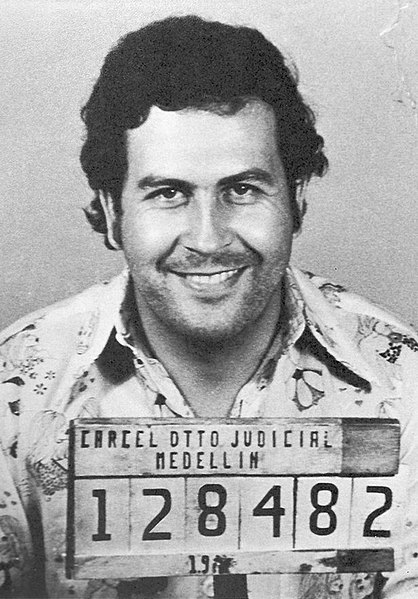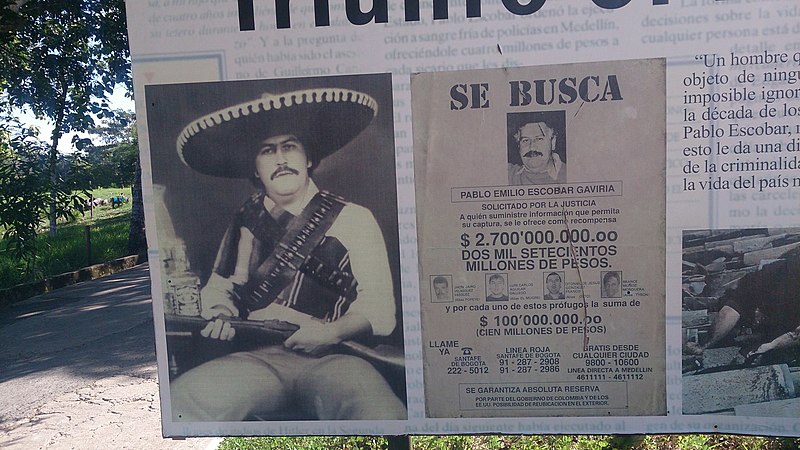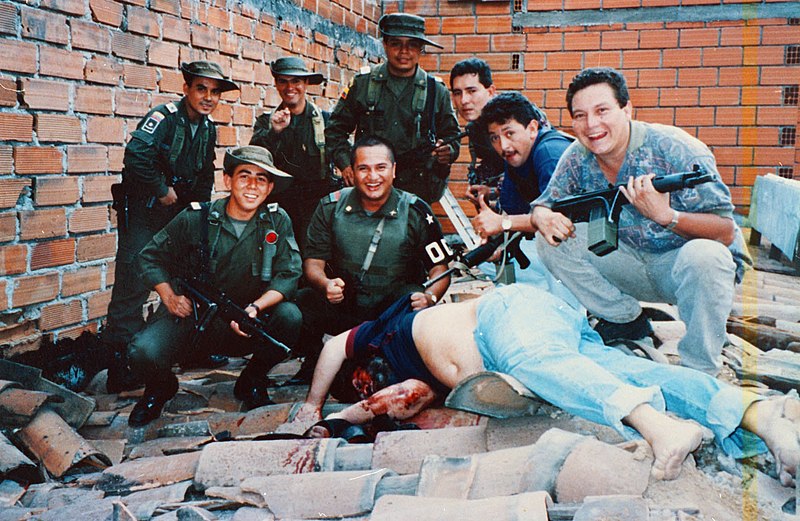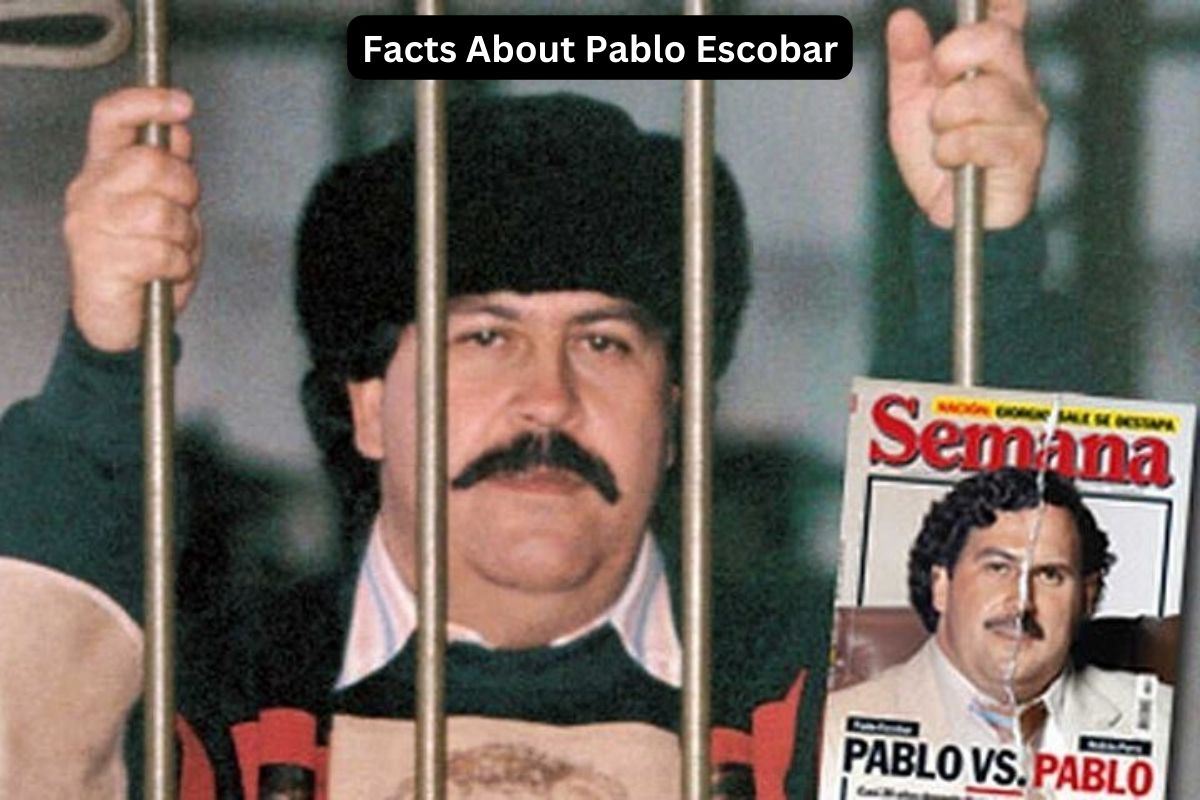In the annals of criminal history, few names evoke as much intrigue and controversy as Pablo Escobar, the notorious Colombian drug lord who rose from humble beginnings to become one of the wealthiest and most powerful individuals of his time.
From his early days as a small-time smuggler to his reign as the undisputed kingpin of the Medellín Cartel, Escobar’s life was a saga of audacious ambition, staggering wealth, and unparalleled brutality.
In this article, we delve into the multifaceted story of Pablo Escobar, exploring the factors that propelled him to infamy, the violence that defined his rule, his tumultuous relationship with Colombian authorities, and the enduring legacy he left behind.
From his dramatic escape from prison to his ultimate demise in a hail of bullets, Escobar’s tale is one that continues to captivate and confound, offering profound insights into the complexities of power, corruption, and the human condition.
Pablo Escobar Facts
1. Pablo Escobar was born on December 1, 1949, in Rionegro, Colombia
Pablo Emilio Escobar Gaviria was born on December 1, 1949, in Rionegro, a small town in the Antioquia department of Colombia. He grew up in Medellín, where his criminal tendencies started to manifest at a young age.
Also Read: Timeline of Pablo Escobar
By his teenage years, Escobar was already involved in various illegal activities, including selling contraband cigarettes and forging documents.

2. He led the notorious Medellín Cartel, dominating the global cocaine trade in the 1980s
Escobar’s rise to power began in the late 1970s when he entered the cocaine trade. He quickly recognized the immense profits that could be made from smuggling cocaine into the United States, and he, along with other traffickers, formed the Medellín Cartel.
Also Read: Colombia History Timeline
Under Escobar’s leadership, the cartel revolutionized the drug trade, developing sophisticated smuggling routes and distribution networks. By the mid-1980s, the Medellín Cartel controlled an estimated 80% of the global cocaine market, making Escobar one of the wealthiest individuals in the world.
3. Escobar amassed immense wealth, estimated at $30 billion at his peak
Escobar’s vast fortune was built on the proceeds of his drug empire. At its peak, his net worth was estimated to be around $30 billion, making him one of the richest men in history.
With his enormous wealth, Escobar lived a life of extravagance, owning luxurious mansions, fleets of cars and planes, and even his own private zoo filled with exotic animals.
He spared no expense in flaunting his wealth, earning him the nickname “The King of Cocaine” and cementing his status as a symbol of excess and opulence.
4. His rule was marked by extreme violence, including assassinations and bombings
Escobar’s reign was characterized by extreme violence and brutality. He employed ruthless tactics to maintain control over his drug empire and eliminate any threats to his power.
Escobar and the Medellín Cartel were responsible for countless murders, including rival drug traffickers, law enforcement officials, politicians, journalists, and innocent civilians caught in the crossfire.
Escobar’s preferred method of dealing with adversaries was the infamous “plata o plomo” (silver or lead) approach, giving targets the choice between accepting bribes or facing assassination. This reign of terror left a lasting scar on Colombia, with the country suffering from widespread corruption, violence, and instability during Escobar’s reign.

5. Escobar had significant political influence in Colombia, manipulating officials and institutions
Escobar wielded significant political influence in Colombia, leveraging his vast wealth and ruthless tactics to manipulate government officials and institutions to serve his interests.
He used bribery, intimidation, and violence to ensure that politicians and law enforcement turned a blind eye to his criminal activities or actively supported them.
Escobar’s influence extended to all levels of government, allowing him to operate with relative impunity for many years. He even managed to secure a seat in Colombia’s Congress in 1982, using his political position to further his criminal enterprise and protect himself from prosecution.
6. He surrendered to authorities in 1991 but escaped from prison a year later
As Escobar’s power and notoriety grew, so did efforts to bring him to justice. The Colombian government, with assistance from international law enforcement agencies such as the DEA (Drug Enforcement Administration) and CIA (Central Intelligence Agency), launched a massive manhunt to capture or kill Escobar and dismantle the Medellín Cartel.
This manhunt, which lasted for years, involved intense surveillance, intelligence gathering, and numerous operations to track down Escobar and his associates.
Despite Escobar’s efforts to evade capture, including hiding in remote jungle hideouts and constantly changing locations, the authorities eventually closed in on him. In 1991, Escobar surrendered to Colombian authorities under the condition that he would serve his sentence in a luxurious private prison of his own design called La Catedral.
However, his time in “prison” was short-lived, as he continued to run his criminal empire from behind bars, prompting the government to take action to transfer him to a conventional prison.
7. A massive manhunt led to his death on December 2, 1993, in Medellín
Escobar’s surrender and subsequent imprisonment at La Catedral did not mark the end of his criminal activities. Instead, he continued to orchestrate drug trafficking operations and maintain control over his empire from within the confines of the prison.
This flagrant violation of his agreement with the Colombian government led to mounting pressure for his transfer to a more secure facility. In July 1992, amidst increasing scrutiny and fears of extradition to the United States, Escobar escaped from La Catedral.
This triggered a massive manhunt, with Colombian security forces, supported by U.S. intelligence and military assistance, intensifying efforts to capture or kill him.
Escobar’s escape catapulted Colombia into a state of turmoil as the manhunt reached its climax. On December 2, 1993, after months of evading capture, Escobar was finally tracked down to a safe house in a middle-class neighborhood in Medellín.
Colombian security forces, assisted by electronic surveillance and intelligence provided by the United States, surrounded the building. In a dramatic rooftop shootout, Escobar was fatally shot by Colombian National Police. His death marked the end of an era of terror but did not completely eradicate the influence of organized crime in Colombia.

8. His legacy is debated, with some seeing him as a Robin Hood figure and others as a ruthless criminal
Pablo Escobar’s life and legacy continue to evoke fascination and controversy. To some, he is remembered as a Robin Hood-like figure who provided for the poor and invested in his community, earning him loyalty and support from many Colombians.
Others see him as a ruthless criminal responsible for untold suffering, violence, and corruption, leaving a dark stain on Colombia’s history. Escobar’s legacy serves as a cautionary tale about the dangers of unchecked power, the devastating consequences of the drug trade, and the complexities of justice and morality.
9. Escobar’s life has inspired numerous books, films, and TV shows, including “Narcos”
Escobar’s life has inspired a plethora of books, films, documentaries, and television series that delve into his rise and fall. One of the most notable adaptations is the critically acclaimed Netflix series “Narcos,” which chronicles Escobar’s reign as the kingpin of the Medellín Cartel and the efforts of law enforcement to bring him down.
The series has garnered widespread acclaim for its portrayal of Escobar’s complex character and the socio-political landscape of Colombia during the height of the drug war.
Escobar’s continued presence in popular culture serves as a reminder of his enduring impact on society and his status as one of the most infamous figures of the 20th century.
10. He remains a subject of fascination and controversy in popular culture
Pablo Escobar’s enduring legacy as a cultural icon is evident in the continued fascination and controversy surrounding his life. From documentaries to television dramas like “Narcos,” Escobar’s story remains a captivating subject for audiences worldwide.
Whether seen as a criminal mastermind or a symbol of rebellion, Escobar’s influence in popular culture highlights the enduring allure of his complex persona and the profound impact he had on society.
